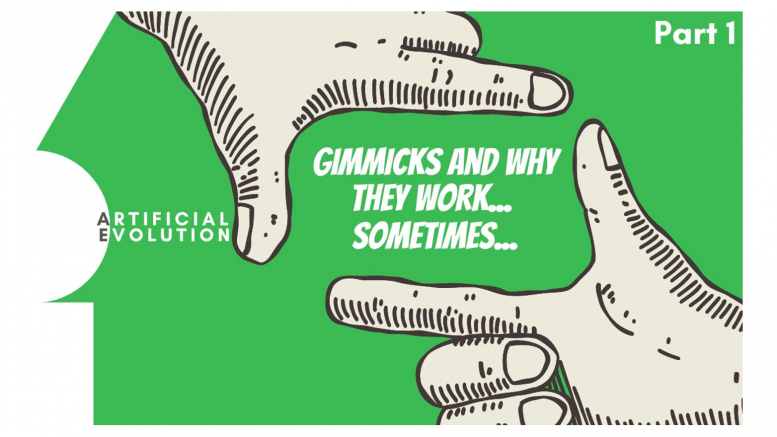I like gimmicks. As a marketer that is easily bored, gimmicks that create dissonance based flutters on Twitter get me going. So that got me thinking… Do they ever work? Do they not? This is part 1 of me agreeing with myself: Yep, they work… sometimes.
What is a gimmick?
Described by everybody’s favorite intern and imaginary friend – ChatGPT:
“A gimmick is a marketing or promotional strategy that is designed to attract attention or generate interest in a product, service, or brand. Gimmicks often involve the use of unique or unconventional tactics or ideas that are intended to set a product or brand apart from competitors, and can range from humorous or unusual advertising campaigns to limited-time promotions or discounts”
The goal is always “to get eyeballs”. By using unique or unconventional tactics, such as humor, limited-time offers, or attention-grabbing visuals, marketers can create a sense of excitement and intrigue around a product or service. This can lead to increased engagement, brand recognition, and ultimately, sales.
One key benefit of marketing gimmicks is their ability to stand out in a crowded marketplace. With so many products and brands vying for consumers’ attention, a clever or attention-grabbing gimmick can help a company rise above the noise and get noticed. This can be particularly effective for new or lesser-known brands that are trying to break through in a competitive industry.
One of my favourite marketing+product gimmicks is Liquid Death – a packaged water company from the US. They’re approach to marketing is… lets say… out there.
This company sells water in cans and makes it cool. WATER!
Check out their digital films and you’ll know what their approach was. ‘Out there’ is putting it mildly. Their hook? Plastic sucks.
Coming back to reality, gimmicks are also used to grow market share whilst piggy-backing on an existing event.
Marketing gimmicks can create a sense of urgency or exclusivity, which can be particularly effective in driving sales. Limited-time offers, for example, can create a sense of urgency among consumers who may be motivated to act quickly to take advantage of a deal before it expires.
In 2021, food delivery platform Swiggy launched its “Match Day Mania” campaign during the IPL cricket tournament. The campaign offered customers discounts and cashback on food orders during IPL matches. The campaign was a huge success, with Swiggy reporting a 30% increase in orders during the tournament.
Was it a gimmick?
Absolutely.
Did it work into a long-term sales strategy they used to date?
Absolutely.
Then there is surrealism. Usually for a comedic purpose.
For reference is one of my all time favourite examples from Fevicol (Pidilite). This ad campaign that aged surprising well (this is 12 years old in 2023), the “truth stretching” for comedy method of gimmics is absolute gold.
The other really unique gimmick style is the ‘product/service as the gimmick’ approach. Brands have realised that creating limited time services create a halo around the brand in the customer’s mind. A great example is AirBnb.
In 2016, Airbnb partnered with the Louvre museum in Paris to offer a once-in-a-lifetime opportunity for two people to spend a night inside the museum. The promotion included a private tour of the museum, dinner with the Mona Lisa, and a sleepover in a pop-up bedroom that was designed to look like a mini apartment. The campaign generated over 150,000 entries, and it received extensive media coverage.
Since this, they’ve experimented many times by offering limited time contest with VICE (https://www.airbnb.com.sg/vice)
The long and short of it.
Gimmicks work with 3 key components intact.
– Limited time
– Surrelist Humour
– Direct and immediate benefit to customer
Next week we discuss on when and how gimmicks don’t work. You know, because, “they’re just gimmicks”
Stay curious. Stay Secure.
See you next week.
The views and opinions published here belong to the author and do not necessarily reflect the views and opinions of the publisher.



Be the first to comment on "Gimmicks and why they work… Sometimes"